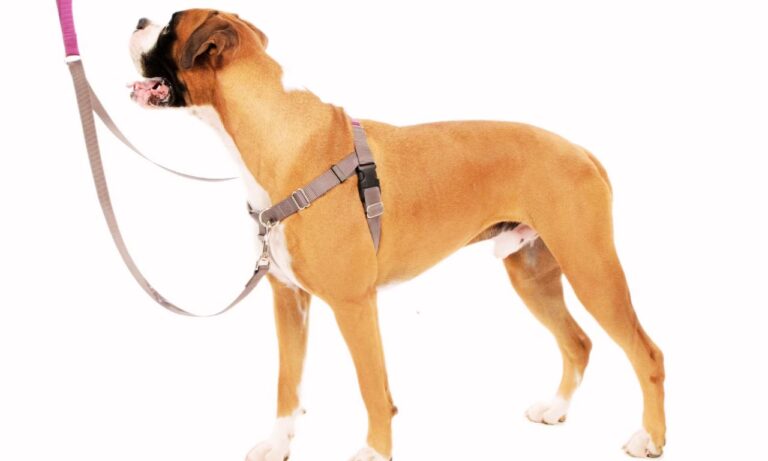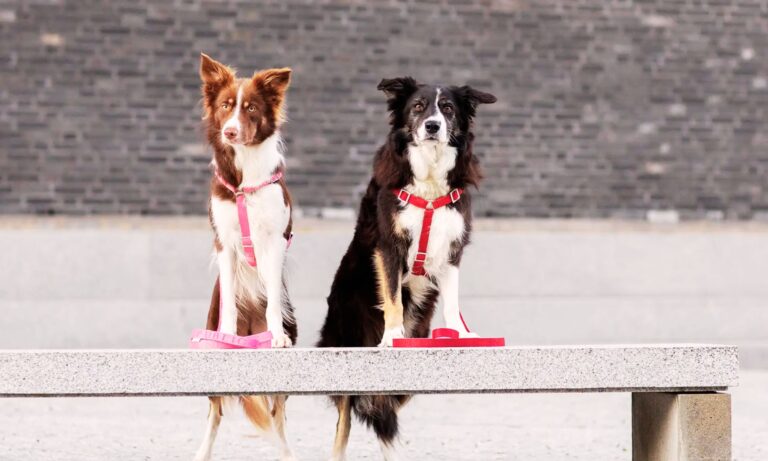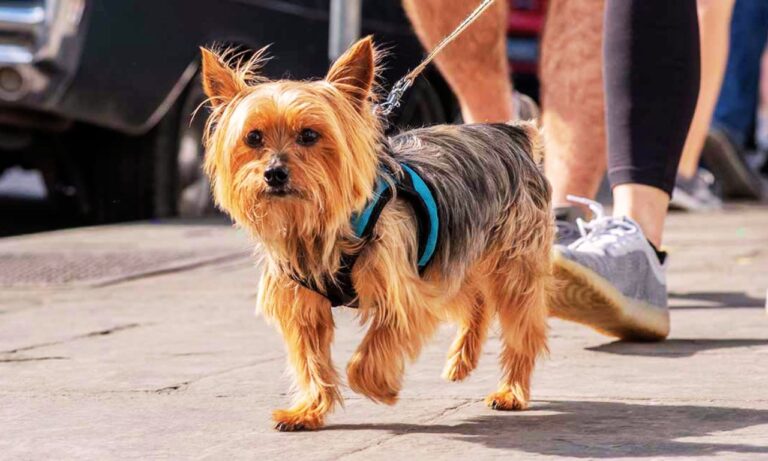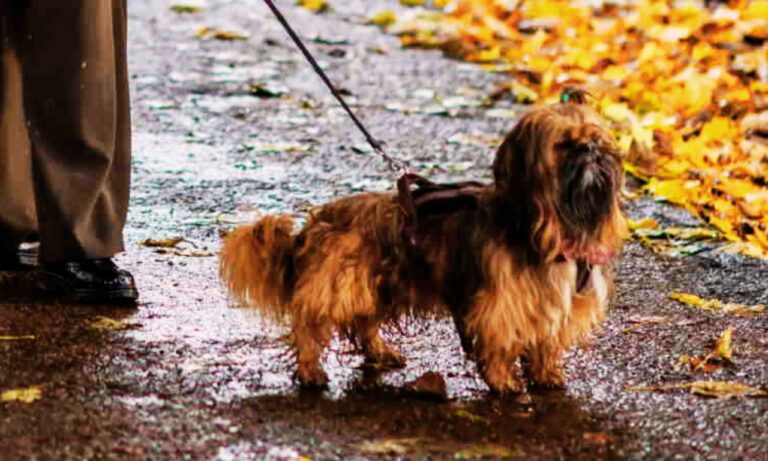| Summary: Dogs stretch their back legs to loosen stiff muscles, promote joint health, increase blood flow, and maintain flexibility. Stretching also reflects emotional states like relaxation, playfulness, or trust. While it’s a natural and healthy behavior, excessive or painful stretching may indicate health issues, so monitor for any signs of discomfort. |
As a dog owner, one of the most endearing and curious behaviors you’ll witness is your dog stretching, especially when it comes to dog stretching back legs. It’s a behavior that many dog owners, including myself, have seen countless times. But the question remains: Why does my dog stretch his back legs?
This behavior might look amusing, but it’s actually a sign of your dog’s physical and emotional state. After observing this in my dog, I’ve learned a lot about its meaning and importance. I’ll walk you through why dogs stretch their back legs, the benefits of this behavior, and what it could mean for your dog’s health.
Learn more about the unique double-layered coat of an Anatolian Shepherd and how to care for it effectively. I’ll also share my personal experiences to help you better understand this natural behavior.
| Question | Answer |
|---|---|
| Why does my dog stretch | To loosen muscles, boost flexibility, and relax. |
| Is it healthy | Yes, it’s natural and beneficial. |
| When to worry | If excessive, painful, or paired with limping. |
| Does it show trust | Yes, it means your dog feels safe and comfortable. |
| Why after waking | To prepare muscles and joints for movement. |
Blog Highlights
ToggleThe Classic Back Leg Stretch: What Does It Look Like?
Before diving into the reasons behind the back leg stretch, let’s first define what this stretch looks like. When your dog stretches his back legs, you’ll notice the following:
- Back legs extended straight behind him
- Front end low to the ground with chest touching the floor
- Tail may be up or wagging (sometimes relaxed)
- Body often arched in a relaxed manner
This type of stretch is known as the “hind-leg stretch,” and it’s one of the most common stretches dogs perform. It’s easy to spot, and you’ve probably seen your dog do it many times, especially after waking up from a nap or after physical activity. For insights on whether Pomeranians should wear a collar, including considerations for safety and alternatives, check out this informative article.
The Physical Benefits of Dog Stretching Back Legs
The first and most important reason your dog might stretch his back legs is that it’s a healthy, natural behavior. Stretching plays a key role in maintaining a dog’s physical well-being.
1. Loosening Stiff Muscles
Just like humans, dogs can feel stiff or sore after lying down for long periods. Stretching helps your dog loosen up his muscles, especially the muscles in the back legs, which are often used during walking, running, and jumping. A good stretch helps to release any built-up tension in these muscles.
When my dog stretches his back legs, I notice that he usually follows it with a few bouncy steps, almost as if he’s saying, “I’m ready to move!” This tells me that a dog stretching back legs helps him prepare his muscles for the next activity, whether it’s a walk or a play session.
2. Promoting Joint Health
Stretching can improve the flexibility of your dog’s joints. The back legs, in particular, are used for many activities like walking, running, and climbing stairs, which puts a lot of strain on the joints. A good stretch can keep these joints flexible and prevent stiffness, especially in older dogs or dogs with joint issues such as arthritis.
For example, my older dog, who has some joint stiffness, frequently stretches his back legs after resting. It’s his way of easing any tension around his hips and knees. This helps maintain his mobility and overall comfort.
3. Increasing Blood Flow
Stretching increases blood circulation to your dog’s muscles, joints, and tendons. When your dog stretches, blood is pumped into these areas, promoting healing and preventing stiffness. This is especially important for dogs that lead an active lifestyle or for older dogs that may have circulation issues.
4. Keeping Muscles and Tendons Flexible
The back legs are crucial for your dog’s movement. Stretching helps keep the muscles and tendons in the hind legs flexible and strong. It can also prevent injuries during exercise by preparing the body for movement.
When my dog stretches his back legs, I often feel relieved, knowing that it’s helping maintain his physical health and flexibility, reducing the chances of injuries while playing or walking. For a comprehensive guide on what kind of harness is best for a Pomeranian, including comfort and safety tips, check out this article.

Emotional and Psychological Reasons for Stretching
In addition to the physical benefits, stretching can also have emotional and psychological reasons. Dogs are known to communicate through body language, and stretching is one of the many ways dogs express themselves.
1. Relaxation and Comfort
A dog stretching his back legs can signal that he is feeling relaxed and comfortable in his environment. If your dog is stretching after lying down for a while or after a nap, it likely means that he’s just waking up and is ready to move around. This is especially common in the morning, when dogs have been sleeping and their bodies are preparing for the day.
From my own experience, when my dog stretches after a long nap, I notice that he usually follows up with a contented sigh or a little wag of his tail. This behavior tells me that he is in a calm and comfortable state, ready to start the day.
2. Playfulness and Excitement
Stretching can also be a playful behavior, signaling excitement or a desire to interact. When dogs stretch their back legs and wag their tail, they may be inviting you to play or engage with them. This is especially true if your dog stretches and then follows up with playful behavior like jumping or running toward you.
I’ve noticed that when my dog stretches his back legs before playtime, it’s almost like he’s warming up. It’s his way of saying, “I’m ready for some fun!” This is a great time to engage in interactive play, like fetching a ball or going for a walk.

3. Bonding and Trust
Stretching is also a sign of trust. When your dog stretches in front of you, he may be showing you that he feels safe and relaxed. This is especially true when dogs expose their underbelly while stretching. It’s a vulnerable position, and by stretching in front of you, your dog is signaling that he trusts you completely.
Whenever my dog stretches his back legs in front of me, it reminds me of how deeply we’ve bonded over time. It’s his way of saying, “I trust you, and I’m comfortable around you.” These little moments of connection help deepen the bond between us. Discover if the American Eskimo is a guard dog and learn about its suitability for protecting your home.

Stretching as Part of a Routine
For many dogs, stretching is simply part of their daily routine. Dogs are creatures of habit, and stretching is something that many dogs do regularly.
1. Morning Stretch
Just like humans, dogs often stretch as soon as they wake up in the morning. It’s their way of preparing their body for the day ahead. This helps loosen up their muscles and joints after a long night of sleep. You may notice your dog stretching back legs first thing in the morning, followed by a few shakes or jumps.
For me, watching my dog stretch his back legs first thing in the morning is a comforting ritual. It shows me that he’s healthy, ready for the day, and is looking forward to our morning walk or playtime.
2. After Physical Activity
Dogs stretch their back legs after physical activity, like a walk, run, or play session. Stretching helps cool down the muscles and joints and prevents stiffness. It’s a natural behavior that keeps their body in good condition after exercise.
I’ve observed that after a long walk or a vigorous play session, my dog will often stretch his back legs as if to say, “That was fun, but now I’m ready to relax!” It’s an essential behavior that helps his body recover from exercise. Learn about the size collar for an American Eskimo to ensure a perfect fit and comfort for your dog.

When Should You Be Concerned About Your Dog’s Stretching?
While stretching is generally healthy and natural, there are certain signs that might indicate a problem. If your dog’s stretching behavior is accompanied by pain or discomfort, it could be a sign of an underlying issue.
1. Excessive or Painful Stretching
If your dog seems to be stretching excessively, or if he appears to be in pain while stretching, it could be a sign of joint issues, muscle strains, or other health problems. Painful stretching is something to be concerned about, especially if your dog is showing signs of limping or favoring one leg.
2. Limited Mobility
If your dog stretches but seems to have limited mobility or shows signs of stiffness after stretching, it might be a sign of arthritis or other joint-related problems. Older dogs or dogs with mobility issues may experience more discomfort when stretching.
If you notice any of these symptoms, it’s important to consult with your veterinarian for a thorough evaluation. Discover why Afghan Hound collars are wide by exploring the unique characteristics of this breed and how wide collars enhance their comfort and style.

Wrapping Up
In conclusion, dog stretching back legs is a natural, healthy, and beneficial behavior for your dog. It helps with muscle relaxation, joint flexibility, and blood circulation, all while signaling that your dog is comfortable, relaxed, and ready for action. Stretching also plays a key role in your dog’s emotional state, acting as a sign of trust, relaxation, and sometimes even excitement or playfulness.
As a dog owner, it’s important to observe these little behaviors and understand the messages your dog is trying to communicate. Stretching is just one of the many ways dogs interact with the world around them. By recognizing the reasons behind your dog’s back leg stretches, you can ensure he stays happy, healthy, and comfortable for years to come.
So, the next time your dog stretches his back legs, take a moment to appreciate this simple yet essential behavior. It’s a sign that your dog is in good health, physically and emotionally, and ready to enjoy another day by your side. Find out what style dog collar is best for hounds to ensure comfort and safety for your furry friend.





